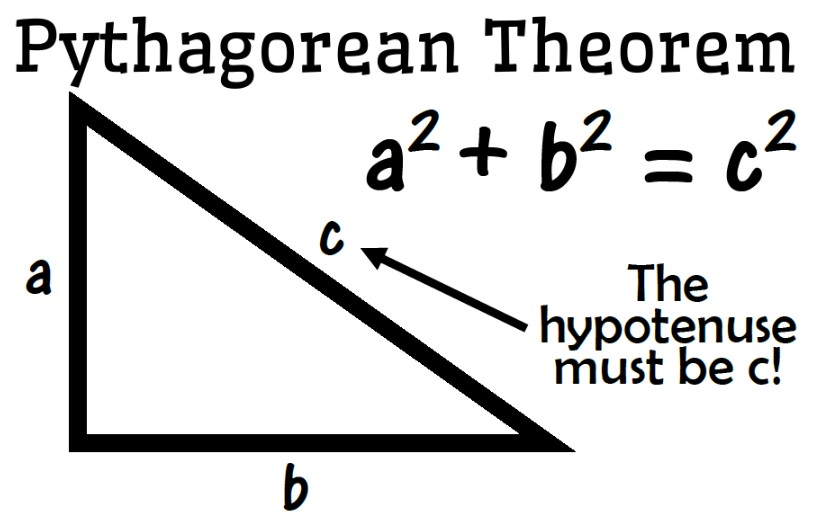
The Pythagorean Theorem is a fundamental concept in mathematics that relates to the sides of a right triangle. It states that the square of the length of the hypotenuse (the side opposite the right angle) is equal to the sum of the squares of the lengths of the other two sides. While this theorem is widely known, many people are unaware that it only works for right triangles. In this blog post, we will explore the properties of right triangles and why the Pythagorean Theorem only applies to them. Understanding the properties of right triangles is essential to understanding why the pythagorean theorem only works on which triangle.
Properties of Right Triangles
A right triangle is a triangle that has one angle measuring 90 degrees (a right angle). The side opposite the right angle is called the hypotenuse, and it is always the longest side in the triangle. The other two sides are called the legs of the triangle.
One unique property of right triangles is that the sum of the squares of the lengths of the legs is equal to the square of the length of the hypotenuse, as stated by the Pythagorean Theorem. This relationship is not true for any other type of triangle.
Understanding the properties of right triangles is crucial to understanding why the Pythagorean Theorem only works on them. Without this knowledge, it is difficult to see why the theorem is limited to right triangles. In the next section, we will explore what happens when we try to apply the Pythagorean Theorem to non-right triangles.
Applying the Pythagorean Theorem to Non-Right Triangles
When we attempt to apply the Pythagorean Theorem to non-right triangles, we quickly discover that it does not work. This is because the Pythagorean Theorem relies on the fact that one angle in the triangle is a right angle, which is not the case for non-right triangles.
For example, let’s consider an equilateral triangle, which has three sides of equal length. If we attempt to apply the Pythagorean Theorem to this triangle, we get:
a^2 + b^2 = c^2
where a, b, and c are all the same length (since the triangle is equilateral). However, we know that there is no right angle in an equilateral triangle, so this equation cannot be true. In fact, the length of any side in an equilateral triangle is simply the square root of 3 times the length of one of the sides.
This example shows that the Pythagorean Theorem is limited to right triangles and cannot be applied to any other type of triangle. The next section will discuss why this is the case the pythagorean theorem only works on which triangle.
Real-World Applications of the Pythagorean Theorem
While the Pythagorean Theorem is limited to right triangles, it is still a very useful tool in many real-world applications. Here are a few examples:
- Construction: The Pythagorean Theorem is often used in construction to ensure that corners are square. By measuring the lengths of two sides of a corner and applying the theorem, builders can determine if the corner is truly 90 degrees.
- Navigation: The Pythagorean Theorem is also used in navigation to calculate distances. For example, if a boat travels 10 miles north and then 5 miles east, the distance it has traveled (as the crow flies) is the square root of 125 miles.
- Science: The Pythagorean Theorem is used in many scientific fields, such as physics and engineering, to calculate forces and distances.
- Art: The Pythagorean Theorem has also been used in art and design to create visually pleasing compositions. For example, the theorem can be used to determine the diagonal length of a rectangle, which can then be used to create a visually balanced design.
Overall, while the Pythagorean Theorem may only apply to right triangles, its applications in the real world are far-reaching and diverse.
Conclusion
In conclusion, the Pythagorean Theorem is a fundamental concept in geometry that has been studied and applied for centuries. While it only applies to right triangles, it is still a powerful tool in many real-world applications, from construction to navigation to art and design. Understanding the properties of right triangles and the pythagorean theorem only works on which triangle is essential for anyone working in these fields, and can also serve as a valuable introduction to more advanced mathematical concepts. By mastering this theorem, we can gain a deeper understanding of the world around us and the relationships between different shapes and objects.